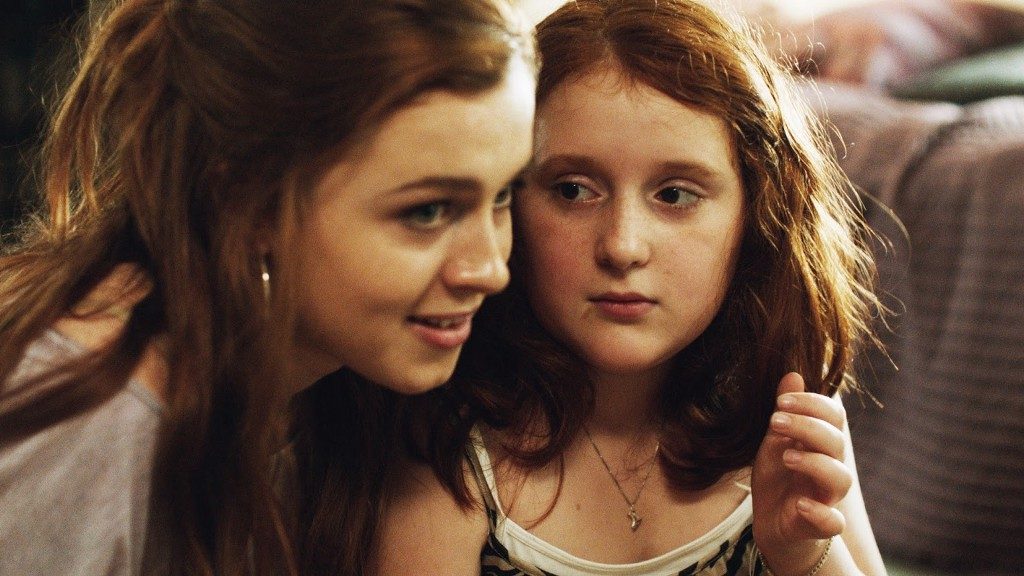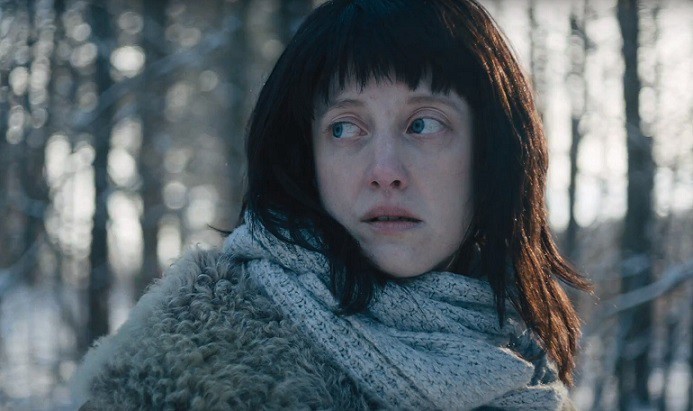Sanna Lenken studied film directing at the National Film School, Dramatiska Institutet in Stockholm. She has also studied film at the European Film College in Ebeltoft, Denmark, and the Dramatiska Institutet. Before her career as a director, she worked in theatre and film in casting and production.
After graduation, she directed the youth TV drama Dubbelliv (Double Life), which aired for two seasons in 2010–2012 on Swedish television. The series was nominated for best drama at the Nordic Children’s Festival and the Chicago International Children’s Film Festival. She also made the 30-minute short film Yoghurt in 2010, which was in competition at the Gothenburg film festival and won an honorable mention. Yoghurt was screened on SVT in 2010. Her last short film, Äta lunch/Eating Lunch, was in competition in Gothenburg, Berlin, and Tribeca. (Sanna Lenken’s site)
My Skinny Sister will premiere at the 2015 Berlin International Film Festival on February 8.
W&H: Please give us your description of the film playing.
SL: The film tells the story of two sisters, Stella and Katja. Just as
Stella enters the exciting world of adolescence, she discovers Katja is hiding
an eating disorder, which slowly tears the family apart. It’s a story about
sisterhood, love, and betrayal told through the eyes of a young girl who is
trying to find out how to be herself.
W&H: What drew you to this story?
SL: There have been so many stories about alcoholism and drugs. Eating
disorders are also a form of abuse, but rarely a theme in feature films that aren’t documentaries. I think the subject of eating disorders is very common, and it is an abuse that affects all the people around the sick person, just like alcoholism.
Family and friends also become co-addicted. I wanted the film to be more
universal, and that’s why I chose the younger sister as my main character.
Through her, we can understand the disease but also feel the frustration
when you try to help someone you love who doesn’t want help.
What was the biggest challenge in making the film?
SL: The biggest challenge was finding my main actress. My main character is only 11-years-old and
she is in every shot in the film. She had to be absolutely fantastic — and we
found her only a month before shooting after searching for a year. Another challenge was to make the actors into an
actual family. I wanted them to be able to show strong emotions in a way where
you have to trust each other 100%. I rehearsed a lot and in the end they became a real family.
W&H: What do you want people to think about when they are leaving the
theatre?
SL: I hope I have touched them in some way, and then I hope they
will process their own experiences. I think sharing experiences is a great
thing in order to change things in society.
W&H: What advice do you have for other female directors?
SL: Work hard and find stories you want to tell from your heart. The great
thing for women is that there are so many stories which haven’t been told from
our perspective and there is a huge audience just waiting to watch it.
W&H: What’s the biggest misconception about you and your work?
SL: The main discussion during
financing for My Skinny Sister was that it is a ”girl’s film” even though I find the film very
universal. It is about human beings, a family, and how they cope when a family
member is not feeling well. Everyone should understand that — not only girls. I
find it very interesting that I have watched so many films with men and I have
never had a problem understanding their stories, so why would a man have a
problem identifying with very human emotions just because the main lead is a girl?
W&H: How did you get your film funded? Share some insights into how you got
the film made.
SL: My producer Annika Rogell was in a European workshop course called EAVE
with my script, and we got a co-producer there from Germany, Ilona Schultz. So
the film is a co-production between Sweden and Germany. Both ZDF/Arte and
Hamburg filmfond financed the project. Then it was nearly two years of
financing, and during this period, I made a short film Eating Lunch about
the same subject — it was good for us to show because it proved we could
handle the subject and also make it artistic. Most of our money, we got it from the
Swedish Film institute. They have been a great support when it comes to female
directors.
W&H: Name your favorite woman-directed film and why.
SL: French director Martine Dugowson’s Mina Tannenbaum. It was
released when I was 16 (1994), and it is about the friendship between two women
and how they try to find out how to be and how to be loved. I have watched it
millions of times. Maybe it wouldn’t be my favorite film now, but it is by far
the film that has affected me the most, since it was so rare to see a film about
girls and made by a woman during the 90s.







